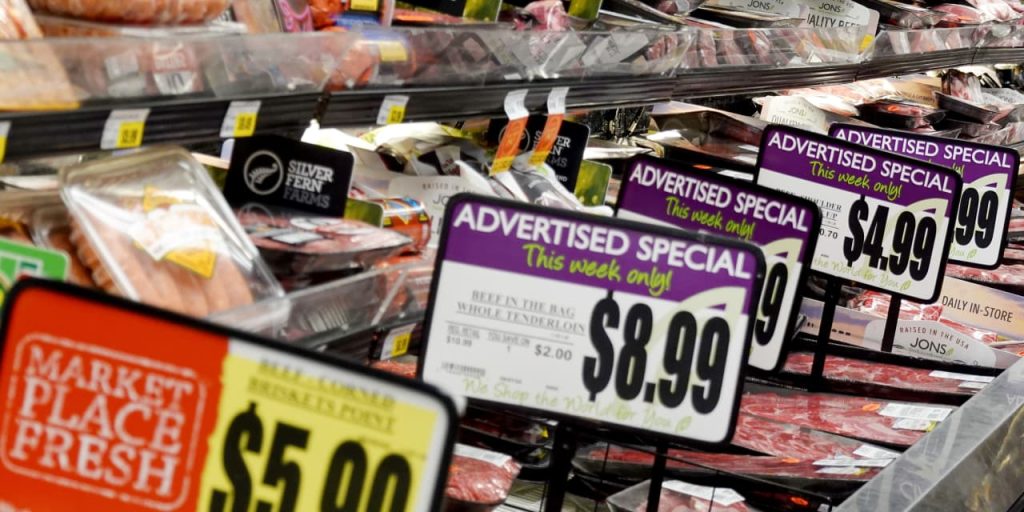The rate of inflation is slowing. How quickly it slows toward low pre-pandemic levels will determine when the Federal Reserve cuts interest rates and brings relief to home buyers and other borrowers.
The latest reading on inflation comes on Tuesday with January’s consumer price index.
Economists polled by The Wall Street Journal forecast a mild 0.2% in increase in consumer prices in the first month of 2024.
The inflation rate in the past 12 months would decelerate to 2.9% from a prior 3.4%.
If forecasters are right, it would mark the first time the CPI has fallen below 3% in almost three years.
The drama in the report, if there’s any, is likely to come from the more closely followed core CPI that omits food and energy prices. The core rate is viewed as a better predictor of future inflation.
Wall Street expects the core rate to rise 0.3% — the upper limit of what the Fed would find tolerable in the short run. The 12-month increase in the core rate could also dip to 3.7% from 3.9%.
Yet the government’s annual revisions in how it calculates inflation, published Friday, could possibly result in a slightly larger uptick in January.
See also: Inflation is slowing, but Americans are still paying the price
A core CPI reading of 0.4% could rattle financial markets.
Many investors believe inflation is on a glide path toward the Fed’s 2% target. A higher-than-expected increase might raise fresh worries.
The possibility of a negative surprise is exactly why senior Fed officials have shown a united front in cautioning Wall Street that a reduction in interest rates is not imminent.
Fed officials say they want to be absolutely convinced inflation is tempering toward its 2% target before they lower interest rates. The surprising strength of the U.S. economy, what’s more, given them time to wait.
What the Fed is paying especially close attention to are housing costs and so-called core services inflation excluding housing, a proxy for labor costs.
Rising rents have been the biggest driver of inflation in the past year. They rose 6.5% in the 12 months ended in December.
There’s plenty of evidence that they are reversing. Indeed, the yearly rate of increase in rents has decelerated from a recent peak of 8.8%.
The problem is, there is a long lag before big price changes in rent show up in the government’s CPI report.
Labor costs are another worry, but they have been slowly easing.
How all this plays out will provide clues on when the Fed will cut rates.
“Core inflation rates have generally been on a downward trend now for a while now,” noted BeiChen Lin, investment strategy analyst at Russell Investments. “But ‘generally’ doesn’t necessarily mean linear or consistent—there could very well be bumps ahead.”
Wall Street
DJIA
investors bet the first rate cut will come as early as May if inflation continues to slow steadily toward the Fed’s 2% goal.
The Fed’s preferred price gauge, known as the PCE index, showed a 2.6% increase in inflation in the 12 months ended in December.
The PCE index measures inflation differently than the CPI. It gives less weight to housing, for one thing, and it takes into account shifts in consumer behavior when they are confronted by higher inflation.
A grocery shopper, for example, might buy ground beef instead of ribeye to save money. Or a shopper in a hardware store might buy a cheaper imported tool instead of a more costly American-made one.
The January PCE report comes out at the end of the month.
Read the full article here
